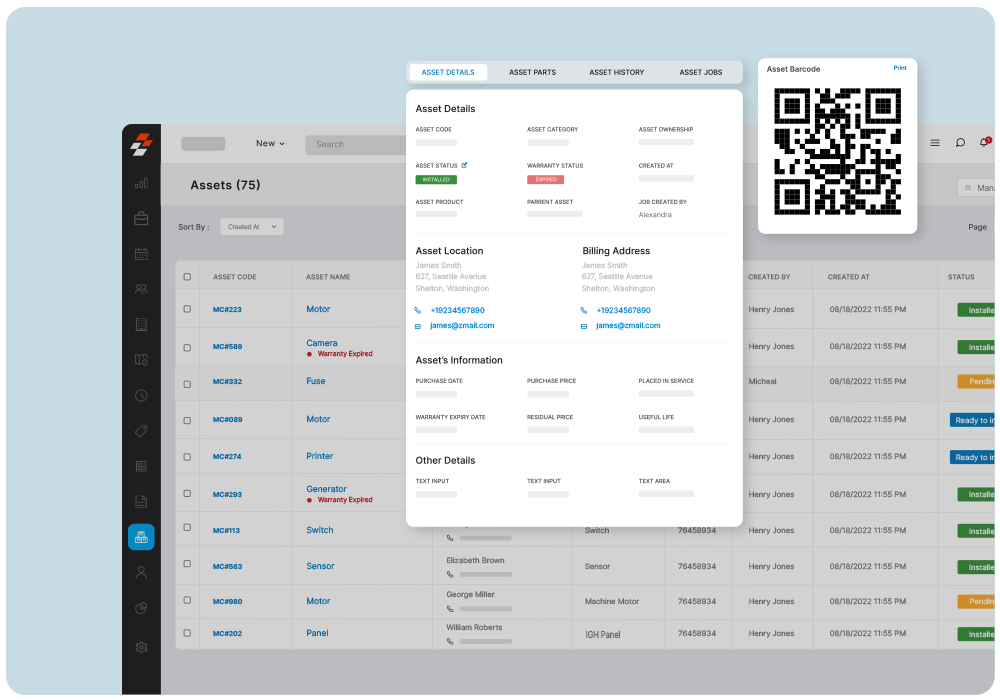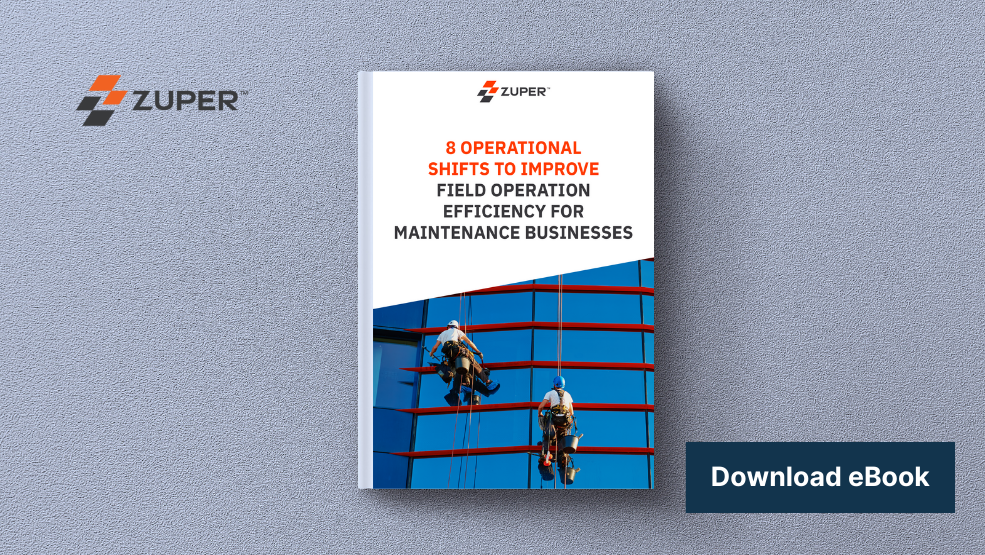Did you know that the top issue in 46% of warehouses today is human error? Without an inventory management system, your business risks all the areas of inefficiency and operational costs. In most cases, you have enough inventory and you may be at the risk of losing sales during a stock out.
In other cases, if your business has too much inventory, it can also be costly in many ways. Bad inventory management has the potential to destroy and damage any facility management business over time due to reasons beyond control. These challenges are all common especially in the facility management business.
Many facility managers have been conquering these challenges successfully. So, what’s the secret? It’s just you need the right tools. Getting a handle on your inventory is the key to smooth operations. Knowing exactly what’s on hand, where it’s located, and when you’ll need more allows you to work magic behind the scenes. Read on to unlock the secrets of inventory control and transform into a supply chain sorcerer who can improve efficiency, cut costs, and prevent disruptions.
The role of inventory control in facilities management
Inventory control plays a pivotal role in ensuring efficient operations within facilities by providing management with visibility and oversight over resources. By keeping track of supplies, equipment, and other assets, facilities managers can make strategic decisions around procurement, maintenance, and resource allocation.
With real-time data on stock levels and usage rates, facilities managers can optimize the procurement process. They can consolidate orders to reduce delivery fees, buy in bulk when possible to get volume discounts, and identify seasonal trends to anticipate demand surges. Tight inventory control also prevents overstocking which reduces waste and saves storage space.
Monitoring inventory closely allows facilities managers to track the usage and lifespan of equipment and components. They can then schedule predictive maintenance to avoid disruptions from unexpected breakdowns. With IoT sensors, managers can even get alerts about anomalies in real-time to trigger immediate servicing.
Knowing exactly what resources are on hand and where they are located allows facilities managers to improve resource utilization. They can redistribute surplus inventory to areas of need, reassign underutilized assets, and get more value from existing resources before procuring new ones.
With diligent monitoring and control of inventory, facilities managers gain the insights they need to streamline operations, reduce costs, and ensure seamless services. Embracing technologies like inventory management software and IoT solutions can further enhance the benefits of inventory control for efficient facilities management.
How inventory control optimizes operations
Inventory control is crucial for streamlining facility operations and reducing costs. By closely monitoring stock levels of supplies and equipment, facilities managers can prevent disruptions from stockouts or waste from overstocking.
Optimized procurement
With real-time visibility into inventory levels and usage rates, facilities managers can make data-driven decisions about when and how much to order. Rather than relying on hunches or habitual ordering, managers can procure supplies only as needed based on historical demand and forecasts. This just-in-time approach cuts down on excess stock and saves money that would otherwise be tied up in unused inventory.
Asset tracking and maintenance
Inventory control also involves recording details about assets like tools, machinery, furniture, and IT equipment. Assigning unique IDs and recording attributes such as location, age, and maintenance schedules helps ensure critical assets are serviced properly and available when needed.
Data-Driven decision making
Robust inventory data enables facilities managers to identify trends and opportunities for improvement. For example, if stockouts frequently occur for certain items, the manager may determine that minimum stock levels need adjustment or that a different supplier could provide better availability. Usage reports could also reveal that some equipment is underutilized, signaling an opportunity to reassign or potentially decommission the asset to cut costs.
By implementing strict yet strategic inventory control procedures, facilities managers can optimize all aspects of operations, reduce waste, and maximize productivity. Continually refining and enhancing these systems with technologies like inventory management software helps facilities achieve new levels of efficiency and cost savings over time. Overall, meticulous management of resources is key to seamless operations.
Key benefits of inventory control for facility managers
Inventory control has significant benefits for facility managers looking to streamline operations and reduce costs. When you know exactly what supplies and equipment you have on hand at any given time, you can make smarter purchasing and maintenance decisions.
Reduce excess spending
By tracking your inventory levels closely, you avoid overstocking or stockouts. Overstocking means you’ve spent money on excess materials that sit unused, tying up your budget. Stockouts mean emergency purchases at higher prices to meet demand. With a good inventory system, you only buy what you need when you need it.
Extend the lifespan of assets
When you have visibility into your equipment and its condition, you can schedule maintenance, repairs, and replacements at optimal times. Preventive maintenance keeps assets running efficiently and avoids disruptions from unexpected breakdowns. For high-value equipment like HVAC systems, medical devices, and industrial machinery, a preventive maintenance program is essential. Tracking each asset’s service schedule, repair history, and usage data helps facility managers make data-driven decisions about maintenance and replacement.
Improve productivity
With an organized inventory and maintenance program, staff spends less time searching for needed supplies or equipment. When everything has its place and schedule, daily tasks proceed without interruption. Facility managers can also spot opportunities to redistribute or share resources between departments or locations to avoid duplication. Maximizing the productivity of both physical and human resources is key to efficient facilities management.
Implementing inventory control procedures and technologies allows facility managers to oversee a seamless flow of resources through their facilities. Tight control over the procurement, storage, maintenance, and deployment of supplies and equipment reduces costs, prevents disruptions, and ensures optimal productivity—all of which contribute to efficient and cost-effective operations. Overall, inventory control gives facility managers more insight and control so they can make the best possible decisions in supporting their organization’s mission.
Download Now: Building Inspection Checklist for Your Facility Maintenance
Implementing effective inventory management processes
To optimize your inventory control, it’s important to establish efficient management processes. These procedures will help ensure you have adequate stock levels to prevent disruptions but not so much that items expire or become obsolete before being used.
Conduct regular audits
Perform routine audits of your inventory to verify what you have on hand matches what’s recorded in your inventory system. Physically count items and inspect them for damage or expiration dates. Audits allow you to make adjustments to your records and uncover any waste, loss, or theft. They provide an accurate snapshot of your current inventory so you can make better purchasing decisions.
Set par levels
Determine ‘par levels’ or target stock amounts for each item. These levels should be enough to meet normal demand and account for lead times to replenish stock. Review usage patterns and seasonality to calculate appropriate par levels. Then monitor inventory levels regularly and reorder when they drop below the par level. This helps ensure you have sufficient stock to avoid stockouts but not too much excess that items expire before being used.
Implement the First In, First Out method
Use the FIFO (first in, first out) method to rotate your stock. This means using your oldest inventory first before tapping into newer stock. FIFO helps reduce waste by ensuring items are used before their expiration dates. It also provides more accurate valuation of your inventory. Apply FIFO for any perishable goods or those with a limited shelf life.
Track and maintain equipment
Keep records of equipment used in your facilities including details like model numbers, serial numbers, locations, and maintenance schedules. Perform routine inspections and service equipment as recommended. Proactively monitoring equipment will help identify any issues early on and prevent disruptions from unexpected breakdowns or malfunctions. It will also help in planning replacement and upgrade schedules to ensure efficient operations.
Continuously improve
Review and revise your inventory control procedures periodically to identify any opportunities for improvement. Look for ways to streamline processes, reduce costs, and take advantage of new technologies that can enhance your inventory management systems. Continuous improvement is key to maximizing the effectiveness of your inventory control over the long run.
Leveraging inventory management software and technology
Automated inventory tracking
Inventory management software gives facilities managers a centralized platform to track resources. The system automatically updates inventory levels each time an item is received, used or transferred. This real-time visibility into stock levels helps prevent stockouts and ensures adequate supplies are on hand. You’ll know exactly when to reorder and can generate purchase orders with the click of a button.
Asset management
IoT sensors and tags allow you to monitor the location and condition of equipment and tools. You’ll receive alerts if a critical piece of machinery goes down or needs maintenance. This helps reduce downtime and ensures issues are addressed before disruptions occur. You can also track the usage and lifespan of assets to determine optimal replacement cycles.

Data-Driven insights
Robust reporting and analytics features provide data-driven insights to help optimize your inventory. You can identify usage trends, spot inefficiencies, and make data-driven decisions. For example, reports may show certain materials are overstocked while others frequently run low. You can then adjust inventory levels and reorder points accordingly. Metrics around inventory turns, dead stock, and fill rates help measure the effectiveness of your inventory control procedures.
Mobility and convenience
Cloud-based inventory software provides access on any internet-connected device. Facilities managers and staff can log in from anywhere to check stock levels, reorder or update inventory, and run reports. This mobility and convenience translates to quicker, more informed decision making. Updates made in the field via mobile devices are instantly synced across the system.
By leveraging technology to support your inventory control efforts, you’ll gain new levels of efficiency, insight, and productivity. Resources can be meticulously managed, waste reduced, and disruptions mitigated. Your facilities will operate at peak performance, with the right supplies and equipment on hand exactly when and where they’re needed. The benefits to your operations and bottom line will be substantial.
Managing equipment, supplies and assets through inventory control
Keeping track of equipment and supplies
As a facility manager, you likely oversee a lot of equipment, tools, and supplies to keep your operations running smoothly. Inventory control helps you maintain the right amounts of everything on hand. By closely monitoring stock levels of critical items, you can prevent shortages that lead to costly disruptions or waste. At the same time, you want to avoid overstocking, which reduces storage space and ties up capital.
Scheduling maintenance and repairs
Your facility depends on essential equipment like HVAC systems, elevators, generators, and plumbing to function properly. Inventory control allows you to track warranties, service records, and maintenance schedules for all your equipment. Software can automatically notify you when routine service or inspections are due so there are no surprises. You’ll have visibility into the operating condition and repair history of each asset to make better decisions about replacement or upgrading.
Optimizing your asset utilization
Do you have equipment that sits idle for long periods or duplicates the function of another device? Inventory control helps identify underutilized or redundant assets so you can redeploy or dispose of them. Once you have a handle on current usage, you may be able to reassign tools and equipment to the areas that need them, or even rent or sell them to generate revenue. Getting more out of your existing assets means fewer new purchases required, helping you to reduce costs.
Inventory control is key to running an efficient facility. Knowing exactly what you have, where it’s located, and how well it’s working at any given time gives you the insight to optimize your resources and processes. With real-time updates regarding costs, quantities, and asset conditions, you have the information you need to make strategic decisions that minimize expenses and maximize productivity. Implementing inventory management best practices into how you oversee your facility’s resources will transform daily operations.
https://www.youtube.com/watch?v=QwrthfVDDvQ&list=PL-JxdWUuXg0GEqttzZPSXaZfFIPcb10K8Preventing stockouts, overstocking and other issues
Efficient inventory control is essential to avoiding stockouts, overstocking, and wasted resources. As a facility manager, you’ll want to closely track the inventory levels of critical supplies and parts to make sure you have enough on hand to prevent disruptions, but not so much that things go unused before their expiration date.
Stockouts
Running out of essential items like cleaning supplies, lightbulbs, or HVAC filters can grind operations to a halt. Implement a minimum stock level for vital resources and check inventory weekly to make sure you never drop below that threshold. When stock does get low, be ready to reorder promptly. For specialty parts that may have a long lead time, consider keeping some extra on hand in case of emergencies.
Overstocking
On the other hand, overstocking wastes money and space. Only keep what you need for normal operations plus a little buffer in case of increased demand or delays. Check if you have unused stock that’s been sitting for a long time and consider donating or disposing of anything that’s expired or unlikely to be used. For expensive equipment and machinery, overstocking parts can tie up a lot of capital unnecessarily. Review stock levels regularly and adjust orders up or down as needed based on actual usage.
Asset tracking
Knowing where all your supplies, tools, and equipment are located and how many of each item you have on hand is key to efficient inventory control. Implement a barcode or RFID tagging system to track the location, condition, maintenance, and lifespan of assets. This allows you to schedule preventive maintenance, quickly locate needed resources, and determine what needs to be reordered or replaced. Asset tracking is invaluable for both maximizing utilization and minimizing loss or waste of valuable equipment and tools.
By keeping a close eye on stock levels, accurately tracking assets, and making data-driven decisions about reordering, you can fine-tune your inventory control for optimal efficiency. The result will be smooth operations, reduced costs, and minimal disruptions across your facilities. Staying on top of inventory through diligent monitoring and management helps create a well-oiled machine.
Continual improvement of inventory management procedures
To maximize the efficiency of your inventory control system, establish procedures to regularly evaluate and improve your inventory management processes. Assess what’s working well and look for areas that could use refinement. Maybe you’ve streamlined purchasing but still struggle with asset tracking. Or perhaps demand forecasting has improved, but stock-level monitoring could be better.
Focus on making incremental enhancements over time through constant measurement and adaptation. Even small tweaks can yield big benefits. For example, adjusting minimum stock levels based on updated sales data or seasonal demand may decrease excess inventory and free up cash flow. Implementing barcode scanning or RFID tagging for asset tracking can save hours of manual labor.
Stay on the lookout for ways to optimize your procedures by eliminating waste and unnecessary effort. See if any tasks can be automated or simplified. New tools and technologies are continually being developed to make inventory control more efficient. Cloud-based inventory management software, predictive analytics, and IoT sensors are just a few of the options that could enhance your existing systems.
Evaluate how current processes are working by regularly reviewing key performance indicators like stockout percentage, excess stock percentage, and inventory turnover rate. Look for trends over time and target weak points. Make improvements incrementally by changing one process at a time. That way you can accurately measure the impact of each enhancement before moving on to the next.
Continual progress, no matter how small, will keep your inventory control methods finely tuned and help your facility operate at peak efficiency. Even after implementing initial inventory procedures, ongoing improvement is key to cost savings, productivity, and avoiding disruptions. With constant refinement, your inventory management systems can evolve to meet changing needs and help facilitate a well-coordinated facility.
Final thoughts
Staying on top of your inventory is challenging, but so rewarding. When operations run smoothly and costs stay low, you know your meticulous tracking is paying off. Keep looking for new ways to monitor your supplies—technology can take a lot of the grunt work off your plate. And don’t forget the human element. Your team wants facilities to hum along just as much as you do. Collaborate with them to make inventory control second nature. You’ll be amazed at how empowered your staff feels when inventory management becomes a shared mission. So take a deep breath, roll up your sleeves, and dive into optimizing your inventory. The future of efficient operations at your facilities starts today.






